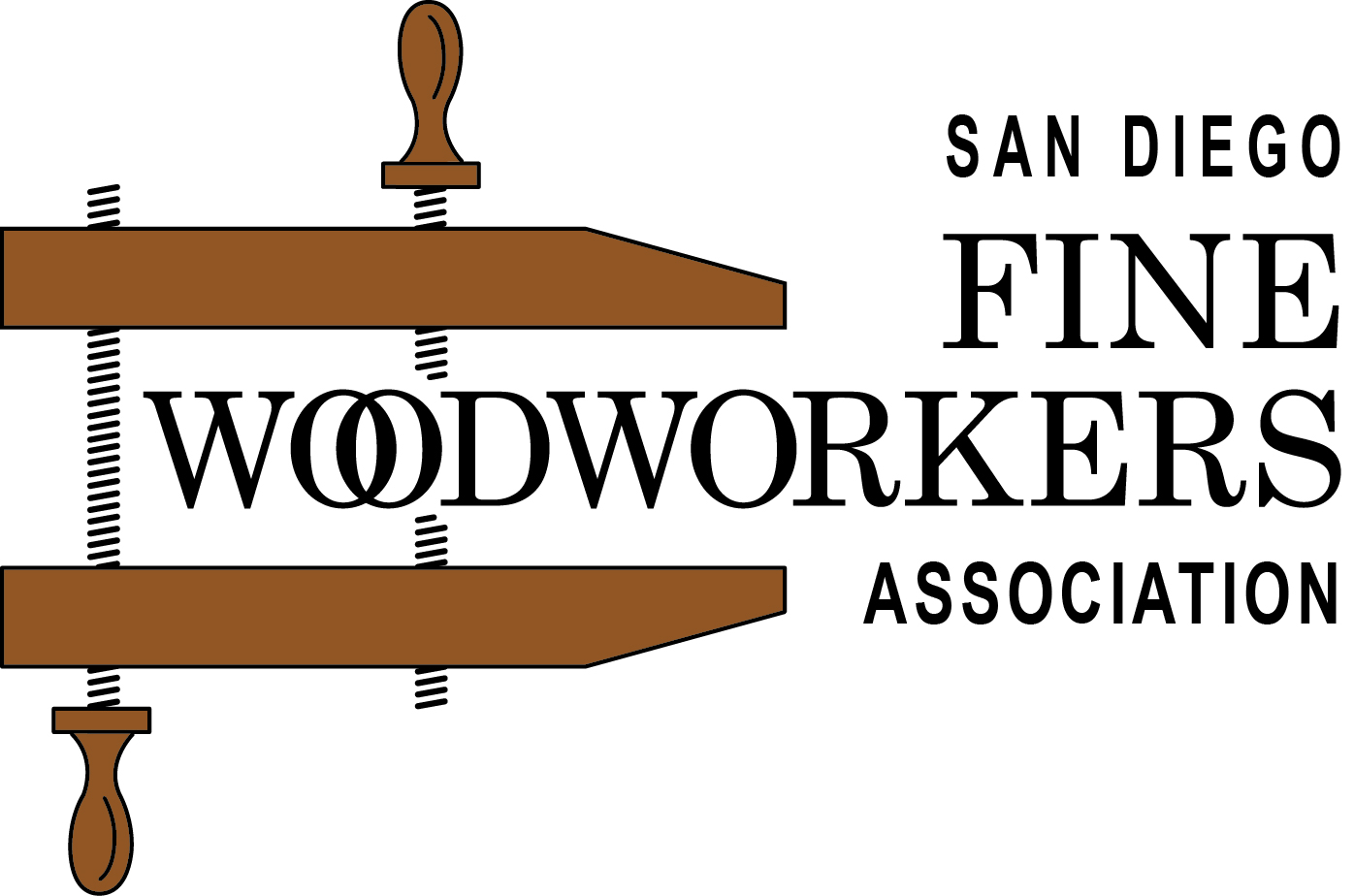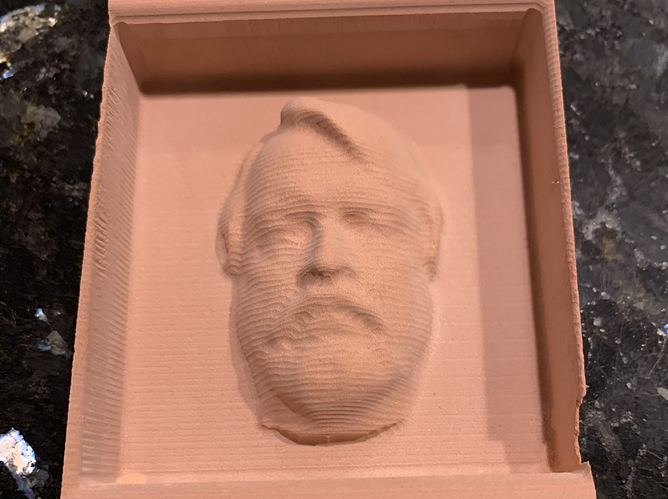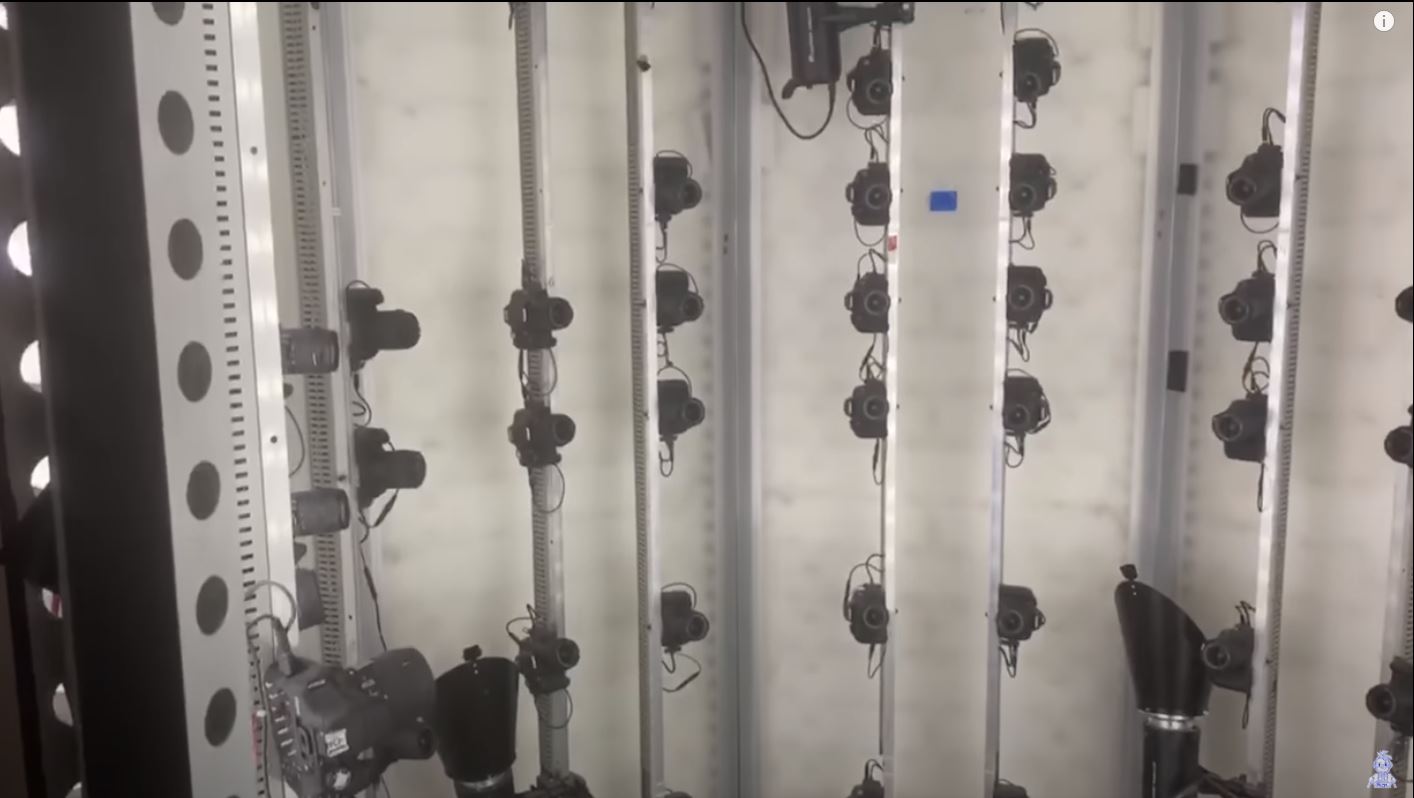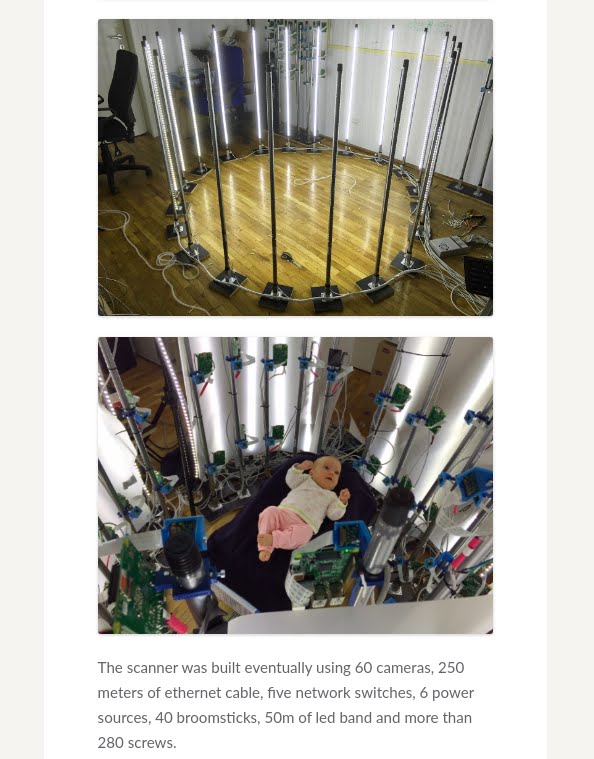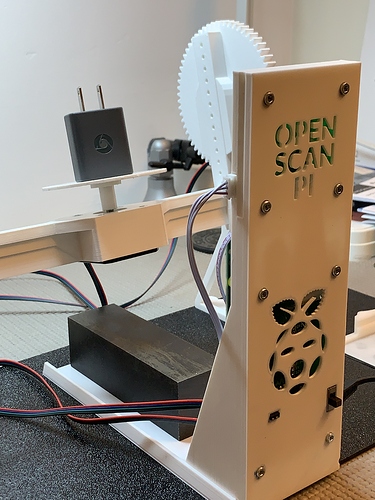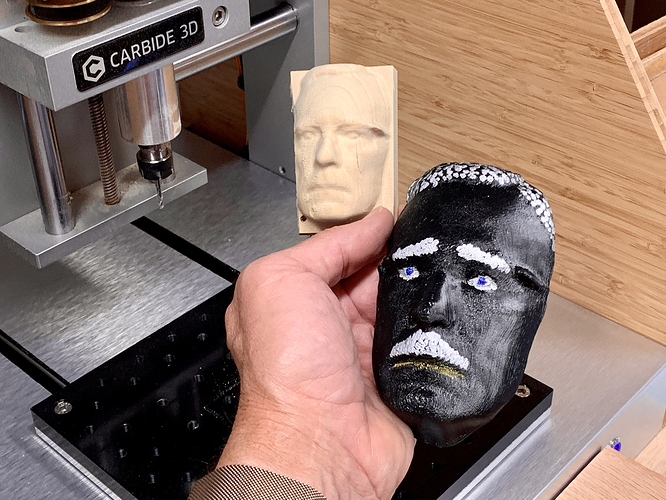I really enjoyed the session since it included so many other cool and informative products and topics.
I’ve been interested in converting physical objects to virtual for some time and worked with the guys at FabScan 5+ years ago. That project uses a line laser aimed at an object on a rotating table with an rPi/camera taking pictures. It then extracts points out of the line deflections and generates a point cloud which can be saved as an STL file. It worked pretty well but did require lots of initial fine tuning to get the scale setup. New versions have calibrations and work much better.
I’ve also done some work a few more years back with an Asus XtionPro depth camera. And after researching Bellus3D I learned that it works by using the same PrimeSense technology found in my Asus XtionPro(and Microsoft Kinect) only designed for close range.
And Travis got me into learning about Photogrammetry maybe year ago when he built a scanner himself and recently I’d renewed that interest trying to find a way to customize a 3D printed face mask(the Montana Mask ) to fit the face better. That’s where i found the Blender plugin but like Bellus3D it’s only for faces.
Meshroom is what I’ve been playing with these past few days and it appears to work well but requires lots of processing power. My lapotp has 16GB of ram and an i7-5500U CPU with a very low end Nvidia graphics card and it still takes 1-2 hours to get a model from 40 pictures.
As Lem showed, getting a realworld object into the computer allows 3D printing, CNC’ing and possibly even laser cutting. So maybe a topic we can expand on later. I’m game if others are.
Thanks Lem!
Doug
